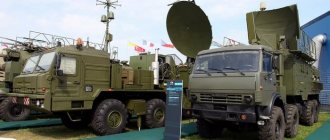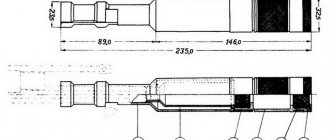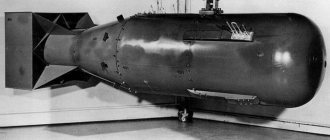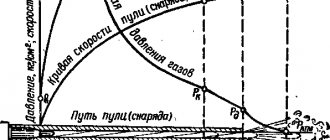At one of the conference calls, the Minister of Defense, speaking, noted that one of the most significant priorities in military development is the beginning of the rearmament of the Russian Air Force with the latest equipment. In addition to new combat aircraft, in particular the widely advertised Sushki and MiG 35s, the troops are also expected to receive new electronic equipment. Moreover, the appearance of many electronic systems not so long ago seemed fantastically unrealistic.
As it turned out, the Russian Armed Forces already have at their disposal one remarkable electronic warfare system, such as Krasukha-4. It is capable of blinding and deafening not only aircraft with long-range radar surveillance of the “AWACS” type, but also space components in the missile guidance systems of the armies of a potential enemy, and now Russia has plenty of them. It was decided that the troops will continue to receive Krasukha-4 mobile electronic warfare systems. When meeting with Krasukha-4, any AWACS system will cease to recognize “friends” and “foes,” as well as the equipment that will need to be controlled.
The history of the creation of "Krasukh"
At the end of 2013, most defense industry enterprises, as usual, were taking stock of their careers. It was noted that some organizations and enterprises were able to fulfill their annual plans long before the end of the year. In particular, Radioelectronic Technologies (the KRET concern) and its structural division - the Bryansk Electromechanical Plant - transferred all the previously ordered Krasukha-4 to the Russian Ministry of Defense.
The handover of two 1RL257 Krasukha-4 electronic warfare systems took place on the territory of the Bryansk Electromechanical Plant. The company has already delivered the first four complexes out of six ordered to the customer. As a result, the contract under the State Defense Order dating back to 2013, concerning new electronic warfare systems, was fully completed before the start of winter. In the future, it was planned to build and transfer to the military department another batch of electronic warfare systems of the latest modifications.
Interesting Facts
In 2015, the Krasukha-4 ground module was used in combat conditions in Syria. A significant number of American Tomahawk missiles were diverted from their targets. During the exercises, in which, in addition to the Krasukha, Su-24 and Su-34 participated, the aircraft were unable to complete their missions, “blinded” by the radio influence of the ground-based electronic warfare system.
In conclusion, it is worth talking about the opinion of Western experts about “Krasukha 4”: experts emphasized that there are no analogues of such equipment in the United States. Domestic experts also highly appreciated the capabilities of the ground module and other modern Russian electronic suppression systems. They calculated that such equipment makes it possible to increase the combat potential of the ground forces by a factor of two, reduce aviation losses by a factor of six, and naval losses by a factor of three.
The purpose of "Krasukha-4"
“Krasukha-4” is a 1RL257 electronic warfare system, which is designed for radio counteraction to on-board radar equipment possessed by strike, reconnaissance and unmanned aircraft of the armed forces of a potential enemy. Experienced experts argue that the potential of a broadband complex of active jamming makes it possible to effectively combat the entire arsenal of the most modern radar stations used by aircraft of various types. According to some information available in open sources, “Krasukhi-4” is capable of “jamming” not only the signals emitted by the radar stations of a potential enemy, but also manipulating radio control channels in unmanned aerial vehicles.
Application
The Krasukha 4 station is designed to suppress the following devices on aircraft, helicopters, unmanned aerial vehicles, and spacecraft:
- radar stations for surveying the surface of the earth;
- Radar of reconnaissance and strike complexes;
- Surface-to-air and air-to-air weapon control radar;
- multifunctional radars.
As mentioned above, the radio-electronic “filling” of the ground module detects the source of signals from enemy military equipment, determines their parameters and is exposed to interference radiation. The electronic warfare system is capable of suppressing the operation of aircraft with long-range radar surveillance of the AWACS type, and space equipment in missile guidance systems.
In addition, the system is capable of covering stationary objects from the radar of E-8 JSTARS reconnaissance aircraft, radar of attack aircraft, etc.
The wideband active jamming module copes with a wide variety of modern radars, while it not only jams signals, but also falsifies, distorts them, creates false targets and thus manipulates the radio channels of drones and missiles fired by the enemy.
One of the probable situations: the rocket flies at an altitude of 200 m, “Krasukha 4” creates radiation that affects its electronics. And it receives false data that it is at an altitude, for example, 1000 m. Having received such information, the rocket, according to the program laid down for it, begins to descend to the required altitude... The result is obvious.
Another clear illustration of the capabilities of the Krasukha 4 radio-electronic module: AWACS combat systems (aircraft + AEW long-range radar detection and control system, the same AWACS) lose the ability to recognize “friends” and “foes”, as well as to conduct control, which could end with an attack on one’s own targets and the release of a high-precision projectile into the “emptiness.”
Who participated in the development of "Krasukha"
Work on the development of Krasukha-4 began in the nineties. Along with this complex, a system of similar purpose was being developed, called “Krasukha-2”. The complexes differed from each other in the composition of the equipment used, in the characteristics, as well as in the chassis used. So, for example, “Krasukhi-2” is mounted on a four-axle base chassis, and “Krasukhi-4” is mounted on a four-axle KAMAZ chassis. It is impossible to get acquainted with all the information with which it would be possible to compile in detail a complete list of differences between the systems due to its secrecy.
Several enterprises were involved in the Krasukha-4 project. The development of the complex was carried out by Gradient - an All-Russian Scientific Research Institute from Rostov-on-Don. The production and testing of prototypes was entrusted to the Novgorod “Kvant”, and the Bryansk Electromechanical Plant was engaged in serial production of the machines. From some sources it became known that the Bryansk enterprise obtains some components needed for the complex from related production, and some are produced locally. The readiness of the Krasukha-4 technical project was announced back in the last decade. And already 2011 was marked by the beginning of mass production of Krasukh-4.
Russia is preparing for electronic warfare in space. Part 1. The Space Review
Posted by Bart Hendricks Monday, October 26, 2022
The Krasukha-4 electronic warfare system is used, among other things, to interfere with observations of radar reconnaissance satellites (source).
Russia is building up impressive electronic warfare capabilities against foreign satellites. At the heart of these efforts is the development of various mobile ground systems to interfere with communications and radar reconnaissance satellites. There is also evidence of plans to conduct electronic warfare from space using nuclear-powered satellites. In addition, work is underway in various parts of Russia to create ground-based infrastructure to obtain intelligence information about foreign satellites, and also, apparently, to protect Russia’s own satellite constellation from electronic attacks from the outside.
Electronic warfare is likely perceived by Russia as a relatively inexpensive asymmetric response to Western military-technological development.
Electronic warfare (EW) is traditionally divided into electronic attack (the offensive use of electromagnetic energy against an enemy's combat capability), electronic defense (defense against enemy electronic attack systems), and electronic warfare support (gathering intelligence information about enemy electronic capabilities). A fourth element added to this recent Russian definition of electronic warfare is the development of measures to counter foreign technical intelligence systems, the importance of which has clearly increased in recent years [1]. One example of this is the Peresvet system, a truck-mounted laser system likely designed to destroy or blind the sensors of optical reconnaissance satellites attempting to track the movements of mobile intercontinental ballistic missile systems [2].
Electronic warfare has gained enormous importance in Russian military doctrine over the past decade. Its status in the Russian armed forces rose to a new level in 2009 with the creation of the Electronic Warfare Troops and the formation of the electronic warfare command headquarters in the General Staff. This has improved electronic warfare coordination, improved integration with other branches of the military, and facilitated the procurement of new electronic warfare technologies. Since then, Russia has been consistently investing in the modernization of electronic warfare and introducing a number of new electronic warfare systems to expand the capabilities of all service units and branches of the military. Some of them have been tested on the battlefields of eastern Ukraine and Syria.
Electronic warfare is likely perceived by Russia as a relatively inexpensive asymmetric response to Western military-technological development. Although the suppression of enemy command and control systems is a key objective of the Russian electronic warfare program, an equally important objective is to protect the country's own military personnel, equipment and infrastructure, for example, by implementing improved radio signature controls that reduce the risk of dissemination of information that leads to detection [3 ].
As space-based communications, reconnaissance and navigation systems play an increasingly important role in ensuring the success of military operations, satellites have become a key target for Russian electronic warfare systems. Anti-space electronic warfare systems have a number of obvious advantages over traditional kinetic anti-satellite defense systems. They do not generate space debris, their effect on the satellite is completely reversible, and they can be narrowly targeted to affect only one of the satellite's many capabilities [4].
"Tirada-2" and "Bylina-MM": interference with communication satellites
Some Russian electronic warfare systems are aimed at jamming and spoofing user communications terminals and GPS receivers within a local area (“downlink jamming”). However, other types of jammers are designed to interfere with the satellites themselves, affecting services for all users in the receiving area of the satellite signals ("uplink jamming"). Russia has at least two electronic warfare systems specifically designed to interfere with communications satellites. The most famous of these is called "Tirada-2" ("tirade"), which seems to have had a predecessor in Soviet times called "Tirada-1D". The space role of Tirada-2 has been confirmed by several official sources. It was described as a "space communications jamming complex" in one of a series of yearbooks on the Russian electronic warfare program that are among the few major sources of information about the program.
There are at least two reports of electronic warfare units testing jammers against operational communications satellites, although it is unknown whether these were Russian or foreign satellites.
The language used in these statements suggests that, if necessary, Tirada-2 could be used to cause irreparable damage to on-board satellite communications systems, although it is impossible to verify whether this is actually the case. One observer, writing for the military weekly Zvezda, argued that Tirada-2 could completely overwhelm satellites' electronic defense systems, forcing them to expend all their electrical energy trying to counteract jamming signals and thus preventing them from transmitting signals to Earth. He emphasized that Tirada-2 is not just a modernization of its Soviet-era predecessor, but a completely new electronic warfare system [8].
As can be judged from several court documents, Tirada-2 was officially put into operation on December 19, 2001 under a contract entered into by the Ministry of Defense with the Vladimir Radio Communications Design Bureau (VKBR) (Vladimir is a city approximately 200 km east of Moscow). Among its subcontractors are the Vladimir Radio Equipment Plant (which appears to be engaged in serial production), the Research and Development Institute of Radio Communications (NIIR), NPP Istok, the Moscow Scientific Research Radio Engineering Institute (MRTI) and NPO PM-Razvitie ( a subsidiary of ISS Reshetnev, a manufacturer of communications and navigation satellites). Publicly available official documents mention systems called Tirada-2S, Tirada-2.2, Tirada-2.3 (also called RB-371A) and Tirada-2.4, which may be different upgrades of the same system.
Different versions of Tirada-2 can be designed to cover different parts of the radio frequency spectrum. It is known from several sources on the Internet that some electronic warfare units specialize in satellites operating in the "decimeter band" (corresponding to ultra-high frequency or UHF, the frequency range from 300 megahertz to 3 gigahertz), while others specialize in satellites using the "centimeter band" ( corresponds to ultra-high frequency (microwave), frequency range from 3 to 30 gigahertz). The letter "S" in "Tirada-2S" can mean the Russian word for "centimeter". Some annual reports of the Vladimir Radio Equipment Plant mention work on setting up Tirada-2S equipment at frequencies “up to 14 GHz,” which is in the centimeter range.
There are at least two reports of electronic warfare units testing jammers against active communications satellites, although it is unknown whether these were Russian or foreign satellites. These units are referred to in some sources as REB-K combat units (“REB” is the Russian abbreviation for electronic warfare, and “K” is for the word “space”). In one of the tests conducted during the Vostok 2010 exercise, a mobile electronic warfare system moved to the desired location after receiving coordinates from the control center in Moscow, calculating the azimuth and angle of a centimeter-wave satellite, and successfully jamming its communications systems [ 10]. Another EW-K unit received two orders to jam communications satellites operating in the UHF range during the Vostok-2014 exercise, and the success of both operations was confirmed by so-called “representatives of third-party organizations” [11]. Presumably, such tests are regularly carried out during exercises. However, none of these tests can be clearly linked to Tirada-2.
Since starting work on the project at the turn of the century, Tirada 2 has suffered numerous delays, as evidenced by several rare court documents and company annual reports published online. At least some of the delays may have been caused by Western-imposed economic sanctions that have forced many Russian defense and space companies to switch from imported electronic components to domestic ones. The problems associated with the “policy of import substitution”, at least to some extent, also affected “Tirada-2”. As part of this policy, the Vladimir Radio Equipment Plant received an order from the general contractor (VKBR) in 2015 to create a “high-voltage power module” necessary for serial production of the Tirada-2S, but problems apparently arose during its development and the project was stopped in 2022 [12].
Despite all the delays, there are signs that Tirada 2 has reached at least some level of operational readiness. In December 2022, the Ministry of Defense published a statement on its website that the system would be operational in Russia's Central Military District next year, and further emphasized its ability to "completely disable communications satellites" [13].
Three other versions of Tirade 2 may soon follow the first. During a military exhibition in August 2022, it was publicly announced that the Ministry of Defense had placed an order with the Vladimir Radio Equipment Plant for the supply of Tirada-2.3 systems, starting at the end of that year. Procurement documents show that as part of this order, the plant entered into a contract with the NIIR Institute on May 30, 2022. Subsequently, NIIR, together with NPP Istok, developed a “transmitting device” for Tirada-2.3, which includes components such as traveling wave lamps, microwave amplifiers and signal spectrum conversion systems [14]. On November 11, 2022, NIIR received a contract for similar work on Tirada-2.2 and 2.4 under two separate government contracts awarded to the Vladimir Radio Equipment Plant on October 31, 2022 [15].
In April 2022, the Organization for Security and Cooperation in Europe (OSCE) Special Monitoring Mission to Ukraine reported that one of its unmanned aerial vehicles had spotted a Tirada-2S truck in the Donbass region of eastern Ukraine a month earlier. However, subsequent analysis by the Digital Forensics Laboratory revealed that the vehicle seen in the image was most likely another electronic warfare system called the R-934BMW [16]. This conclusion is confirmed by the fact that one contract that can be linked to Tirada-2.2 provides for the supply of a four-axle KAMAZ-6350 truck and a ChMZAP-8335 trailer [17]. Neither is visible in OSCE images.
A photo of an OSCE unmanned aerial vehicle, which allegedly deployed the Tirade-2 complex in Ukraine. Subsequent analysis has cast doubt on this identification. (Source: OSCE).
Another photo of what is allegedly an element of Tirada-2 was taken at the MAKS aerospace show in Moscow in 2013. It shows a model of a KAMAZ-6350 truck, which appears to have been identified as part of the Tirada-2S and may be the system's command post. Mobile electronic warfare systems often consist of several vehicles, one of which is equipped with jamming equipment, while others are used for auxiliary tasks such as control and power generation.
A mock-up of what appears to be a command post for the Tirada-2S satellite jamming system. (Source: A.V. Karpenko)
Another ground mobile electronic warfare system that appears to be specifically designed to jam satellite communications links is called Bylina-MM ("bylina" is the word used to refer to a traditional Russian oral epic poem). Its existence was reported in Russian electronic warfare yearbooks published in 2014 and 2015. In articles from the Moscow Institute MNIRTI, it was called an electronic warfare system aimed at satellites operating in the “millimeter wave,” which corresponds to extremely high frequency (EHF), the range of the electromagnetic spectrum from 30 to 300 gigahertz.
There is reason to believe that Bylina-MM is part of a much larger electronic warfare project.
According to the articles, work on Bylina-MM was based on theoretical studies conducted jointly with the Institute of Applied Physics (IPF) as part of research projects called Tirada-EV (2008–2010), Trakt-F ( 2010–2012) and “Vacuum-10” (2011–2013). Tirad-2S was mentioned along with Bylina-MM as a project that applied the results of this research, suggesting that it was at least partially intended to interfere with satellites operating in that particular frequency range. One of MNIRTI’s contributions to this project was the development of gyrotron amplifiers based on traveling wave tubes and waveguide transmission lines, which made it possible to develop “Russia’s first automated system for jamming satellite communication channels in the millimeter range.” It should be taken into account that EHF technology is developing rapidly.
Another confirmation of the cosmic role of Bylina-MM was the undated presentation of the MNIRTI, which summed up the results of joint work with the Institute of Applied Physics within the framework of the Trakt-F research project. Here it is described as a system for “jamming the on-board transponders of the millimeter wave communications satellites Milstar, GBS, Skynet, Sicral, Italsat and Sakura” used by “leading foreign countries” and NATO [19].
Although the MNIRTI presentation appears to date from the beginning of the last decade, at least two of the types of satellites mentioned here cannot be modern targets for Bylina-MM. Italsat and Sakura were Italian and Japanese military communications satellites launched between the 1970s and 1990s that have long since ended their active lives. Sicral 1 and 1B are Italian military communications satellites (also used by NATO), launched in 2001 and 2009 (the subsequent satellite Sicral 2, launched in 2015, does not operate in the EHF band). Skynet is the name of several generations of satellites. The satellites provide strategic communications services for the British Armed Forces and NATO. The last of them was launched into orbit in 2012. GBS (Global Broadcast Service) is not a satellite, it is a system that uses direct broadcast satellite technology to transmit video and large files to the US and allied military. It uses communications payloads on UHF Follow-On (UFO) and Wideband Global Satcom (WGS) satellites.
Milstar is the name of a series of US Air Force communications satellites launched between 1994 and 2003, four of which are still operational. Their antennas use very narrow beams, which provide less opportunity for enemy detection and countermeasures, and can change gain patterns when an interfering signal is detected. Milstar was replaced by Advanced Extremely High Frequency (AEHF) satellites launched between 2010 and 2022. These include frequency hopping technology as well as phased array antennas that can adapt their radiation patterns to block potential sources of interference.
American Milstar satellites are one of the possible targets for Bylina-MM. (Source: US Air Force)
In the annual reports of the NPO PM-Razvitie, Bylina-MM is described as a series of “ground-based mobile automated stations operating in the Ka and V frequency bands” [20]. The Ka and V bands use frequencies in the range 26.5–40 gigahertz and 40–75 gigahertz, respectively. Ka-band is the preferred band for high-performance geostationary communications satellites and is also increasingly used by low-Earth orbit satellite constellations such as SpaceX's Starlink. One of the few known uses of V-band in space communications so far has been the use of 60 gigahertz for crosslinking between Milstar satellites, a possible indication that they were targeted for interference by Bylina-MM.
There are indications that Bylina-MM is part of a much larger electronic warfare project. In recent years, the name "Bylina" (without the "MM") has been associated in several sources with a highly automated mobile command and control system that uses artificial intelligence to select and recognize targets (not just satellites). Which determines how to suppress them, and subsequently gives appropriate orders to electronic warfare units on the ground. The 2022 Electronic Warfare Yearbook designates this system as the RB-109A and reports that its development was included in the technical specifications for the Bylina project. The RB-109A is said to consist of five trucks that communicate with the electronic warfare "situation center" (also known as the RB-108S) via satellite communications. Unlike earlier command and control systems, the RB-109A is a versatile system that can operate in conjunction with a wide range of electronic warfare systems targeting targets on the ground, in the air or in space. It was successfully tested in 2016 along with several electronic warfare systems, including Tirada-2S and what was called Bylina-KV-KRET [21].
KRET (Concern Radioelectronic Technologies), part of the Rostec State Corporation, is the largest holding company in the Russian electronics industry and unites some of the leading manufacturers of electronic warfare systems. Answering a question about the role of KRET in Bylina in an interview in July 2022, the first deputy director of the holding said that they had developed a “fundamentally new complex” that can be used for reconnaissance and “control of jamming stations in the shortwave range” [22] . This was apparently a reference to the Bylina-KV-KRET (KV is the Russian abbreviation for short-wave), but its exact purpose remains unclear.
To confuse matters further, the Department of Defense released a statement in September 2022 in which it used the name "bylina" to refer to the automated command system and said that it was first tested during the Zapad 2017 military exercises in Russia and Belarus [23]. In April 2022, the Izvestia newspaper already called the RB-109A and Bylina one and the same, reporting that the first Bylina will enter service in 2022 and that all electronic warfare units will be equipped with Bylina by 2025 [24 ].
Whatever the exact name of Bylina, a court document published in 2013 identified the project's general contractor as the Central Research Institute of Economics, Informatics and Control Systems (CRI EISU), which received the contract for Bylina from the Ministry in November defense On November 3, 2011, and then on January 10, 2012, subcontracting work on Bylina-MM was transferred to MNIRTI [25]. The project's roots may be deeper, as it was also mentioned in the 2010 annual report of a company called VNII Etalon. Other industrial partners participating in Bylina since at least 2011 are the Scientific and Technical Center for Electronic Warfare (STC EW) and NPO PM-Razvitie.
Central Research Institute EISU, which also operates under the auspices of the Rostec State Corporation (but is not part of the KRET holding), is a major supplier of information technologies for the Ministry of Defense. An article published on his website acknowledges his role in creating an "automated electronic warfare control system" (without mentioning the name "Bylina") [26]. At least two contracts signed by the company in 2016 can be traced back to the 2011 government contract for Bylina. They are also testing software, including for the RB-108S electronic warfare situation center [27].
Russia may also be working on developing electronic warfare capabilities against orbiting satellites.
Thus, the name "Bylina" was used for a command and control system supporting a wide range of electronic warfare systems, but also referred to at least two electronic warfare systems operating in different parts of the radio frequency spectrum (Bylina-KV and Bylina-MM). Moreover, the latter is specifically aimed at communication satellites. No images of Bylina-MM have ever been published, and it is unknown whether the system was deployed operationally. The last publicly available reference to Bylina-MM is contained in the 2022 annual report of NPO PM-Razvitie, which, as in previous years, continued to supply antennas for the system. According to Russian press reports, the Central Research Institute of EISU has been experiencing serious financial difficulties for some time and is on the verge of bankruptcy. It is unclear what impact, if any, this will have on the project.
The MNIRTI Institute may be involved in another electronic warfare project related to space. In 2016, the Izvestia newspaper, citing an anonymous source in the Ministry of Defense, reported that MNIRTI, together with a company called JSC NIIMA Progress, was working on a system for suppressing satellite communications called KRBSS, which means “Electronic warfare complex for countering satellite systems at low circular orbits." It was reportedly designed to target LEO satellite constellations such as Iridium, Globalstar and OneWeb, and will primarily be deployed in the Arctic region. The jamming equipment, using an array of phased array antennas, would be mounted on two trucks and would simultaneously monitor and jam signals from dozens of satellites. At a later stage, the complex could also be placed on board ships, aircraft, helicopters and drones. It is reported that elements of the system have already been tested and showed better results than expected. Izvestia’s source did not say when the CRBSS will go into operation, noting only that the deployment will take place in several stages. So far, the existence of CRBSS has not been confirmed by other sources [28].
Russia may also be working on developing electronic warfare capabilities against orbiting satellites. In July 2022, the RIA agency announced plans to create the Porubshchik-2 aircraft, which could be used to electronically suppress targets on land, sea, air and space. It will be the successor to another electronic warfare aircraft called the Il-22PP/Porubshchik, a modified version of the Soviet Il-20 electronic reconnaissance aircraft, three of which were delivered to the Russian army in 2016. For a more powerful electronic warfare payload, Porubshchik-2 will require a heavier platform, possibly an Il-276 transport aircraft. According to a RIA Novosti source, the preliminary design of the new aircraft has been completed. There was no independent confirmation of this message, and it is also unknown which satellites Porubshchik-2 will jam [29].
"Krasukha-4" and "Divnomorye": countering radar reconnaissance satellites
Other targets for Russian electronic warfare systems include radar reconnaissance satellites, which can take high-resolution images even at night and through cloud cover. There are currently two radar jammers in use: "Krasukha-2" (also known as "Krasukha-2O", 1L269, 1RL269 and RB-261A) and "Krasukha-4" (also designated as Krasukha-S4, 1L257, 1RL257 and RB -271A). "Krasukha" is a Russian word for a poisonous plant called "belladonna" or "deadly nightshade." Both were designed and built by companies belonging to the KRET holding. While the two systems appear to be primarily aimed at interfering with airborne radar systems, Krasukha-4 is also widely known to be capable of interfering with radar surveillance satellites. The old version of the KRET website described it as “a mobile electronic warfare system to suppress spy satellites, ground-based radars and airborne AWACS systems,” adding that it could “completely cover an object from radar detection at a distance of 150–300 km” by creating “powerful jamming on the main radar frequencies." In May 2015, the Interfax-ABN news agency quoted an anonymous military official as saying that Krasukha-4 had been successfully used against American LaCrosse-type radar reconnaissance satellites, which, according to him, were “mainly intended for surveillance of deployment sites.” “Topol” and mobile complexes of intercontinental ballistic missiles “Yars”, adding that they can “search for these satellites and create the necessary interference” [30].
When Krasukha-4 was demonstrated at a military exhibition in Yekaterinburg later that year, the military told reporters that it was used to “camouflage ground and air targets from aerial and space reconnaissance using electronic countermeasures.” air- and space-based radar systems." It is said to be capable of jamming one radar satellite or one E-8 Joint STARS reconnaissance aircraft at a time, or 11 tactical aircraft at a time. The “coverage area” of the satellites was specified as 15–25 kilometers, which apparently meant that Krasukha-4 had to be deployed at such a distance from the object that it was trying to camouflage from passing radar reconnaissance satellites [31]. These objects may be mobile intercontinental ballistic missile systems, as the Interfax report suggests.
The Krasukha-4 system consists of two KAMAZ-6350 trucks, one of which carries radar jamming equipment, and the other serves as a command post. Both Krasukha-2 and Krasukha-4 are believed to operate in conjunction with electronic warfare systems called Moskva-1 (1L267), which, among other things, are equipped with electronic intelligence equipment that provides Krasukha targeting data "
Command post "Krasukha-4" (left) and electronic warfare system. (Source: A.V. Karpenko)
The history of the Krasukha project dates back to the 1990s. Government contracts for the Krasukha-4 and Krasukha-2 complexes were awarded on July 25, 1994 and December 1, 1997, but they were not ready for mass production until early 2011. The general contractor for both Krasukha elements is the Gradient Research Institute in Rostov-on-Don, and serial production was transferred to NPO Kvant (Krasukha-2) and the Bryansk Electromechanical Plant (BEMZ) (Krasukha-4) in May 2011 [32] . At the end of 2022, VNII Gradient and BEMZ signed a contract for the modernization of Krasukha-4. [33] Krasukha-2 is also being modernized, and in July of this year the press reported that it can now be used against satellites. It is reported that it now consists of only one truck, rather than the three previously used [34].
It is alleged that Divnomorye is capable of jamming radars and “other avionics systems” of aircraft, helicopters and unmanned aerial vehicles and, in addition, will also be used against “spy satellites.”
In December 2013, KRET director Nikolai Kolesov announced that his holding company was working on a new electronic warfare system called Divnomorye, which was expected to be ready for deployment by early 2016 (the name apparently comes from the name of the Black Sea resort in the south Russia). He called it an improved version of the Moskva-1 complex, which can be used both for electronic reconnaissance and as a command post, and said that one of its tasks would be to participate in the country’s “space defense” [35]. In messages published in the KRET yearbook, Divnomorye is called a system of “electronic suppression of air and space-based weapons.” At the MAKS-2017 aerospace show in July 2022, another KRET representative said that the new complex (which he did not mention by name) will ultimately replace the Krasukha-2 and Krasukha-4 complexes, although they still have to be “significantly modernized” " He confirmed that the complex will be aimed at both air and space-based systems, adding that testing has already begun [36].
In May 2022, the Izvestia newspaper, citing unnamed sources in the Ministry of Defense, reported that Divnomorye should begin operational deployment at the end of the year. It is claimed to be capable of jamming radars and “other avionics systems” of aircraft (such as the P-3 AWACS, P-2 Hawkeye and P-8 JSTAR), helicopters, and drones. and will also be used against “spy satellites.” Its range was determined to be “several hundred kilometers”, and it was assumed that it would combine the functions of electronic reconnaissance and electronic attack of the Moskva-1, Krasukha-2 and Krasukha-4 complexes. It is reported that all equipment can be installed on one truck and ready for use within a few minutes, making Divnomorye “highly mobile” and “virtually invulnerable.”
An analysis of publicly available documents shows that the Divnomorye project started on December 20, 2012 with the receipt of a government contract from KRET, which, in turn, on April 30, 2013, commissioned VNII Gradient to work on a new electronic warfare complex, which is the actual general contractor of the project. The main subcontractors are the Central Research Institute of EISU, the Sapsan Scientific and Production Center and the Kaluga Scientific Research Radio Engineering Institute (KNIRTI). The designations found in the documents are: “Divnomorye-U”, U-S, U-R, U-KIZ, T, T-P, M, MU, MR and MUSP, but what exactly they mean is unknown.
The chief designer of the VNII Gradient for Divnomorye is listed in the procurement documentation as Vladimir Nikolaevich Vernigora, who was one of several KRET employees awarded a prestigious state prize in 2022 for his contribution to the development of electronic warfare systems for attacks on air and space-based targets at the base radar systems [38]. One contract with Divnomorye, signed in early 2022, called for “refinement of the program for calculating satellite trajectories,” another clear sign of its role in space [39].
There are no positively identified images of “Wonderful Sea”. Some, which have the name “Divnomorye” in their signature, actually depict “Krasukha-2”. Part of the available documentation concerns the purchase of KAMAZ-6350 trucks, the same type as the Tirada-2 and Krasukha-4 [40]. Earlier this year, an anonymous source tweeted a never-before-seen image of an electronic warfare system on a KAMAZ-6350 chassis, saying that it was designed to “jam radio relay and satellite communications and counter the orbital constellation of a potential enemy.” However, it is not clear whether this is “Divnomorye”, “Tirada-2” or something else.
An unidentified satellite jamming vehicle on a KAMAZ-6350 chassis. (source)
Original source:
Links to documents in the text (in the original source)
Electronic warfare complex "Krasukha-4": principle of operation
Fortunately or unfortunately, depending on who you are, but due to the secrecy regime, the true characteristics of “Krasukha-4” are unknown. However, only fragmentary pieces of information can be found from the available open sources. The station analyzes the types of signals and ensures that the radar of a potential enemy is influenced by powerful intellectual interference radiation. As a result, enemy aircraft are deprived of the slightest opportunity to detect targets and aim high-precision weapons at them.
Chassis for "Krasukha"
From the available data, it is known that the complex includes two vehicles equipped with special equipment. Both vehicles are equipped with electronic equipment and a number of antennas of a wide variety of designs. One of the cars has an antenna unit with a sliding rod, which is probably intended for communication.
There are many types of special purpose antennas installed on the roof of the second car. With the help of three parabolic antennas, facing in any direction and raised at any angle, it is most likely possible to thoroughly probe the nearby space. Consequently, “Krasukha-4” is capable of transmitting radio signals without any self-limitations in azimuths and elevations.
Both special vehicles benefit from high-performance digital equipment. Some sources claim that individual components in the equipment are quite difficult to manufacture. For example, it can take several days to produce just one board. With all this, with the help of such a board you can easily replace large blocks that may still be in analog equipment. It is also known that with the help of Krasukha-4 it is possible to establish interference over a wide frequency range. In terms of the range of influence, all that is known is that it can exceed three hundred kilometers.
Performance characteristics
The operating frequency range is from 8000 to 18000 MHz.
Energy potential – from 50 to 64 dB.
Action sector: azimuth – 360°, elevation – from -1° to + 60° (+85°)
Capacity - 1 radar of a spacecraft and 1 aircraft of the combat control and target designation system E-8 JSTARS or 11 radars of tactical aircraft.
Radius of the coverage zone when suppressing radar:
- attack aircraft of tactical aviation - 11 - 19 km,
- reconnaissance and strike modules – 16 – 41 km,
- spacecraft – 15 – 25 km.
Coagulation and deployment time: in summer – 20 minutes, in winter – 40 minutes.
The preparation time for work, not taking into account deployment/collapse, is 3 minutes.
Continuous operation time – 24 hours.
Power consumption – 30 kW.
The main task of "Krasukha-4"
The main task in the new electronic warfare system is its action against radar stations and aircraft for various purposes. For these purposes, according to some media reports, “Krasukhi-4” has the appropriate algorithms in operation. Using the equipment on board, you can easily detect radio signal sources (aviation radars), analyze them and, if particularly necessary, install interference at the required frequencies.
According to publicly available information, the Russian Ministry of Defense has currently received six Krasukh-4s. Their exact locations were not announced, which is understandable, because this is connected with the execution of specific combat missions assigned to such systems. Another Krasukha development, Krasukha-2, is also supplied to the Russian armed forces. Moreover, it is offered for export.
What is electronic warfare
Electronic warfare is electronic warfare, one might say armed warfare, based on the use of radio emission for radio-electronic destruction (suppression) of the operation of radio-electronic devices of technical systems for command and control of troops, weapons, communications, reconnaissance of the enemy to protect the radio-electronic equipment of their own control systems.
Americans use several terms to refer to electronic warfare:
- Electronic Warfare or EW - electronic warfare;
- Command, Control, Communication Countermeasure or С3СМ - counteraction to control;
- Electronic Combat - electronic warfare.
Electronic warfare objectives:
- disruption of the functioning of enemy army and weapon control systems;
- reduction in the effectiveness of the enemy’s use of weapons, military equipment, and electronic equipment;
- protection of weapons, equipment, and significant objects from enemy reconnaissance devices;
- protection of technical means of controlling your troops and weapons.
The actions of the army's electronic warfare units are coordinated with the maneuvers of combat aviation, air defense and artillery.
As for the design, application possibilities and technical characteristics of the ground-based radio-electronic suppression module RB-271A “Krasukha-4” (index 1RL257), the information is classified for known reasons.
EW complex "Krasukha": reviews from military experts
It is unlikely that on the planet today there is or will be a worthy analogue of this “smartest” radio-electronic weapon of our time. If a tactical need suddenly arises, the complex can simply burn out all the electronic “stuffing” of enemy aircraft, high-precision missiles or low-orbit satellites. However, this is only in extreme cases.
In fact, all Russian radio-electronic systems, all “Krasukhas” are masters at creating false images and will literally “drive” any enemy strike system crazy. It is known that the guidance of high-precision missile weapons is carried out during continuous radio exchange with the help of a command post. According to NATO standards, the role of such command posts is performed by aircraft “charged” with AWACS, which in turn are connected to various satellite constellations.
The relationship between Krasukha and AWACS
Electronic warfare stations with sweet names, when AWACS appear within their range, punctually begin to be integrated into their entire “reliably” protected communication system. Next, they begin to punctually distort the signals transmitted and received by flying command posts.
According to many experts, and all this was confirmed by many tests, very soon the AWACS cease to recognize “friends” and “foes”, and to figure out how to actually conduct control. The result of such “probing” may entirely be an attack on one’s own military targets, which may suddenly seem completely unfriendly.
“Playing along” “Accordions” “Beauties”
The actions of the small-sized automated radars "Garmon", naturally, are not as impressive as the fearsome electronic warfare systems "Krasukhi", however, they can fit well into a joint integrated air defense and air movement control system.
“Harmonies” are engaged in ensuring the detection and tracking of a wide variety of air objects and targets, determining their state affiliations, and automatically issuing route information for automated control system complexes. Test tests were successfully carried out with these complexes during the Sochi Olympic Games. Naturally, after such verification, they began serial production and delivery to combat duty among the troops.
As a result, both complexes, in close cooperation, reliably cover the Russian peaceful sky.










